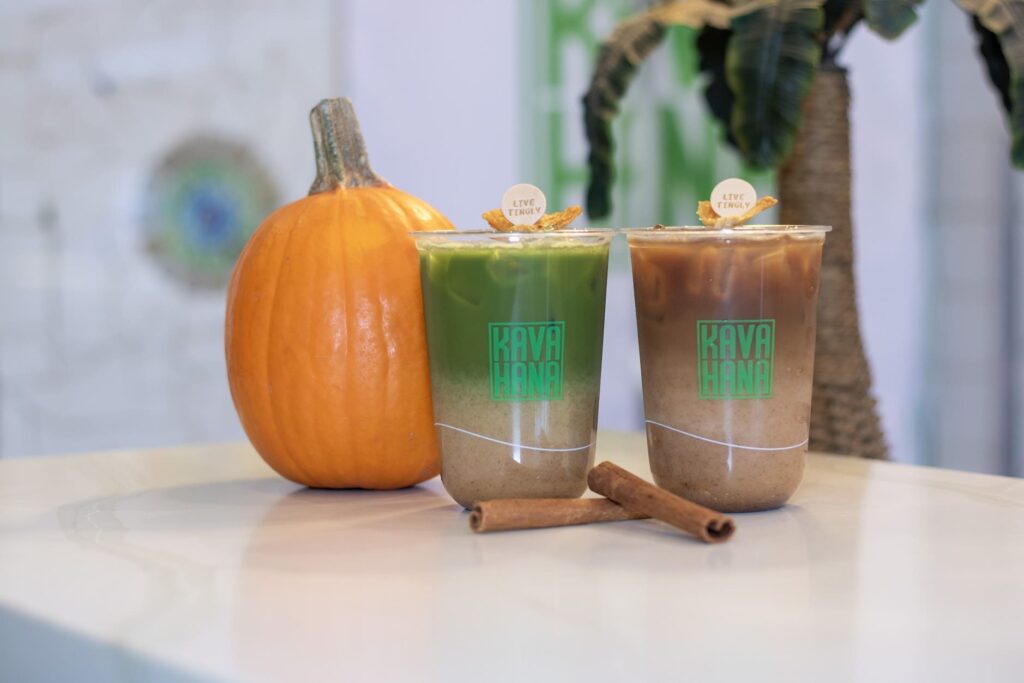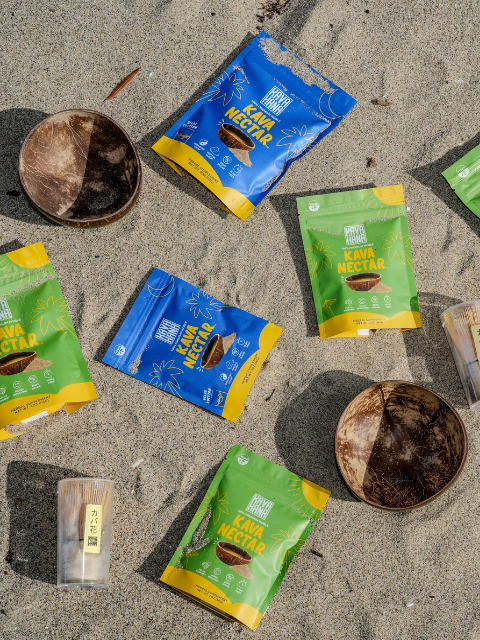We want everyone to try kava because we believe everyone can benefit from it. Unfortunately, this isn’t as simple as that.
The trouble is that there are a bunch of different types of kava on the market, supplements, extracts, tinctures. And while at first glance this may seem like a good thing, they aren’t all what they may seem. The forms found in the store are highly processed, imparting their effectiveness and purity.
One of the biggest challenges with Kava is that people want to research, yet research tends to use these highly processed forms of kava rather than the traditional kava that has been drunk for thousands of years.
Kava supplements and extracts
These are the most accessible because they can be purchased at your local health or natural food store. Kava supplements come in tablets and capsules that contain concentrated kava. Extracts are liquid forms of concentrated kava, usually mixed with water or juice and then drunk.
The biggest concern (and the difference to traditional kava) is that these forms of kava are highly processed.
Even though we want to trust that labels are accurate and reliable, this isn’t always the case. Capsules and extracts often contain additional ingredients and fillers not disclosed on labels or packaging.
There are a few reasons for this:
- Fillers are cheaper and allow the manufacturers to make more products for less money.
- Pills and capsules require substances and are integrated to keep them together. Capsules are usually made from cellulose, a vegetable-based case filled with the active product, while tablets are made with excipients, which hold the ingredients together.
- Excipients also are added to increase the shelf life so products can stay in stores longer.
While presented as safe and inactive, these ingredients may still have unknown interactions with your body and with the kava ingredients. Not only that, but the kava itself is highly processed. Even if in pill form, the kava used is an extraction, not whole-food kava.
Kava extraction involves an intensive multi-step process where raw kava is mixed with a medium to break down the plant and separate the active ingredients, kavalactones (usually 95% ethanol, acetone, or chloroform). The mixing, extraction, and blending are repeated three times before they are considered satisfactory for consumer use. The compounds used can also have detrimental effects on the kava’s effectiveness and our overall health.
In fact, the bad reputation Kava had in the 1990s and early 2000s is a result of these processed forms of it. The research involved in kava used supplements and extracts rather than the traditional kava drink. This caused negative side effects that had never been connected to kava before and led to huge misconceptions about kava causing liver damage. After a thorough review by the WHO, it was discovered that factors like added ingredients and medication interactions were causing the negative effects, not the kava itself. This makes sense, seeing that pure, traditional kava has been used for over 3000 years in the Pacific islands with no reports of liver damage.
Traditional kava
Kava has been traditionally drunk as a tea in the Pacific islands for centuries. Its uses include cultural and community ceremonies and gatherings, as well as many different medicinal claims, including helping with topical pain, sleep, and anxiety.
Unlike the supplement and extract forms of kava, traditional kava is made from pure kava powder from the root of the kava plant. The roots are harvested, dried, and ground to make a fine powder when mature. This powder is added to water or coconut milk to make the earthy beverage we serve at Kavahana. There are no additives, fillers, and processing beyond the traditional root drying, which is often from the island sun.
Because traditional kava is so pure, you can expect more consistent and reliable effects. While it can take some time to figure out the best dose for you, when you know you can expect to feel the same every time because there are no other ingredients to impact your experience. This is why we are huge supports of using traditional store bought kava. And it’s also the motivation for us to create Kava Nectar, a traditional kava you can use at home. We figure the more people who use pure kava, the more people will talk about it and spread the word to others who are kava curious.
* Please note that the majority of kava research pertains to kava extracts, which often undergo significant processing and may contain additional ingredients and fillers that can influence their efficacy. It is crucial to consider this distinction when reading about kava studies. To draw an analogy, enjoying natural kava as a beverage can be likened to experiencing a freshly brewed cappuccino, whereas kava extracts are akin in functionality to a caffeine pill. Both forms have their unique benefits and can cater to different preferences and needs. While it’s helpful to understand research on kava extracts, please view it critically and remember that natural kava offers a uniquely holistic experience.


